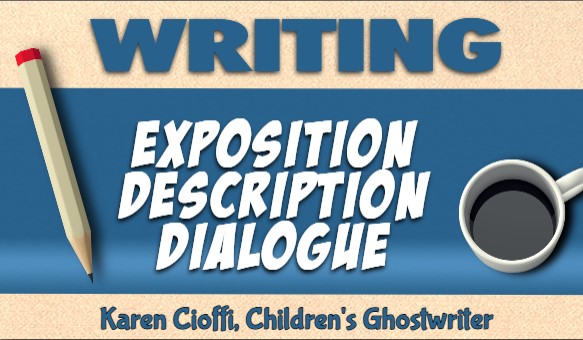I read an interesting article on Nathan Bransford’s site (link below), which discusses the use of dialogue to deliver exposition.
But whether delivering exposition or description, the answer to the title question is no.
Dialogue should be a natural conversation between characters, and it should be specific to the scene.
Each character will have his own motivation for the back and forth.
Once you force the conversation to include exposition, description, or backstory, the characters become more like “chatbots” than people.
Here is an example of dialogue and description from Chapter Four of “Walking Through Walls”:
Captivated by the clouds, Wang walked further into the room. When he noticed the master watching him, Wang stopped in his tracks. He lowered his eyes and bowed.
“Come forward, young man. What brings you to my temple?” Remaining in a bowed position, Wang stepped forward. “My Honorable Master, my name is Wang. I have come seeking an apprenticeship. I am from a village to the west. It took many days traveling over difficult roads to find you. For years, I have read everything I could about the Eternals and wished for this. Please accept me.”
The master studied Wang.
Feeling like an intruder, Wang stood motionless and stared downward. He could not help but notice the spotless floor. It looked like it had never been walked upon.
After a long silence, the master spoke. “Learning magic is a long hardship, one that you cannot imagine. It takes many years and much sacrifice. I can see in your heart that this will be difficult for you.”
Wang knelt on the ground, afraid to look up. His eyes darted to and fro, desperate to find the words the master needed to hear to accept him.
(Sorry, the above except lost its paragraph formatting and Gutenberg is not allowing me to fix it.)
While there’s a bit of backstory in the above excerpt, when Wang blurts out why he’s there, it’s easy to see that Wang is desperate to convince the Master Eternal. It doesn’t feel forced. It’s a natural conversation.
Later in the book, Wang looks through a window and witnesses magical events. The information in this scene is conveyed through description, internal dialogue, and a bit of dialogue in the form of crying out.
Conveying the description as it’s happening brings the reader into the story. It’s engaging.
But suppose the narrator didn’t describe what was going on when it happened, and later Wang discussed it with a friend.
To convey the description through dialogue, it might go like this:
Wang: “I saw the most astonishing things tonight. Magical things.”
Friend: “What did you see?”
Wang would go through a long and drawn-out speech, giving details of what he had seen.
Friend: “What else happened?”
Wang would go on.
Friend: “That’s amazing. Go on, please.”
Wang would go on.
This scenario has the friend asking questions to interrupt Wang’s dialogue, purposely to avoid a super-long uninterrupted block of dialogue.
There are two no-nos going on here:
1. The friend is feeding Wang the questions specifically to get the information to the readers. It’s forced, and readers will know it.
2. Relaying comprehensive description through dialogue is forced and tedious.
This is why writing dialogue to deliver exposition and comprehensive description should be avoided.
On the flip side, you wouldn’t want large blocks of description either. This can also be boring and cause the reader to pause.
Keeping the reader engaged should be one of a writer’s top priorities.
As with all things, balance is needed in writing.
References:
https://nathanbransford.com/blog/2022/10/dont-force-your-characters-to-ask-leading-questions-just-so-you-can-deliver-exposition
I’m a working children’s ghostwriter, rewriter, and coach. I can help turn your story into a book you’ll be proud to be the author of, one that’s publishable and marketable.
OTHER HELP I OFFER:
HOW TO WRITE A CHILDREN'S FICTION BOOK
A DIY book to help you write your own children’s book.
FICTION WRITING FOR CHILDREN eCOURSE
4-Weeks / 8 Sections Guided Self-Study Mentoring Program
You can contact me at: kcioffiventrice@gmail.com.



2 thoughts on “Should You Use Dialogue to Deliver Description and Exposition?”